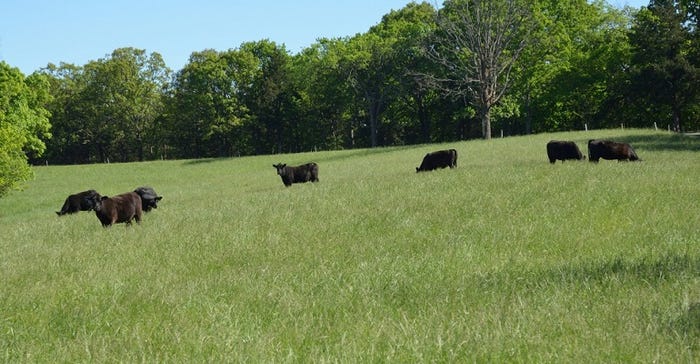Before rebuilding your herd, focus on your pastures during 2023
With a favorable outlook for cattle markets in the years ahead, producers should begin preparing now — starting with their pastures and rangeland.
April 1, 2023

Sponsored Content
Providing ample, high-quality grazing delivers many far-reaching benefits — from reduced feed costs to a healthier, more productive herd. But whether due to too little or too much moisture, our grazing lands have taken a beating. They need recovery. And that takes time.
An emphasis on rebuilding pastures during 2023 will pay off as market opportunities arise in the coming years. Working to maximize assets that help cows and calves cost-efficiently meet their nutritional needs is a good place to start.
Herd rebuilding or expansion must start with enabling grazing land to support the additional animals over the long term. Effective weed and brush control not only preserves moisture and nutrients for recovering forage grasses, it increases forage yield, elevating the energy and protein available to grazing cattle. This helps cows more efficiently meet their own nutritional requirements and that of their calves.
It’s important to remember a good grazing management program is just as important as a good vaccine protocol or feed and mineral program, yet it is often overlooked.
Addition by subtraction
Grass replaces weeds controlled pound for pound, at least. Producers should prioritize eliminating troublesome species. This, along with proper grazing management, allows grasses to reclaim bare spots and gives them the space they need to get ahead of, and outcompete, weeds. The benefits are twofold:
Increased utilization — Cattle tend to stay clear of weedy areas due to physical or chemical barriers, resulting in grazing avoidance. When animals start to avoid areas because of weeds, cattle may focus on and overgraze areas with better access to desirable forages.
Improved health — Providing ample, quality forage benefits the cow’s body condition, and that has far-reaching impacts on everything from reproductive performance to weaning weights to the health of both cow and calf.
Mature weeds reduce the quality and palatability of the forage available for livestock grazing. Or, worse, toxic weeds such as poison hemlock, perilla mint and sneezeweed cause severe illness that can lead to death.
Removing those toxic weeds benefits overall herd health by eliminating potential illness, which compromises a cow’s ability to produce milk or return to cycle for the next breeding season.

The next calf crop is what keeps the beef producer in business. Forages are the basis for ensuring productive cows with thrifty, high-performing calves. Although it’s impossible to anticipate weather conditions, it is possible to better prepare for what Mother Nature has in mind. Weed-free pastures and hayfields can more cost-effectively and more quickly return cows to condition after calving. With weeds out of the way, these sites also produce more of the high-quality hay needed to help maintain condition through next winter.
Weed-free all season long
When it comes to weed control, choose a residual herbicide, such as DuraCor® herbicide, early in the season to stop weeds that are up and growing while providing control of those that germinate later. This extended control will help prevent weeds throughout the season, preserving moisture and allowing grasses to better compete against weeds.
Many factors play into maximizing pasture productivity, especially in areas already challenged by drought. It’s a delicate balance to be sure. For help with a plan to grow more grass, visit RangeAndPasture.com. To learn more about the far-reaching impact effective pasture management can have on herd performance, visit HerdHealth.RangeAndPasture.com.
® Trademarks of Corteva Agriscience and its affiliated companies. Under normal field conditions, DuraCor® is nonvolatile. DuraCor has no grazing or haying restrictions for any class of livestock, including lactating dairy cows, horses (including lactating mares) and meat animals prior to slaughter. Label precautions apply to forage treated with DuraCor and to manure and urine from animals that have consumed treated forage. DuraCor is not registered for sale or use in all states. Contact your state pesticide regulatory agency to determine if a product is registered for sale or use in your state. Consult the label for full details. Always read and follow label directions.
About the Author(s)
You May Also Like





